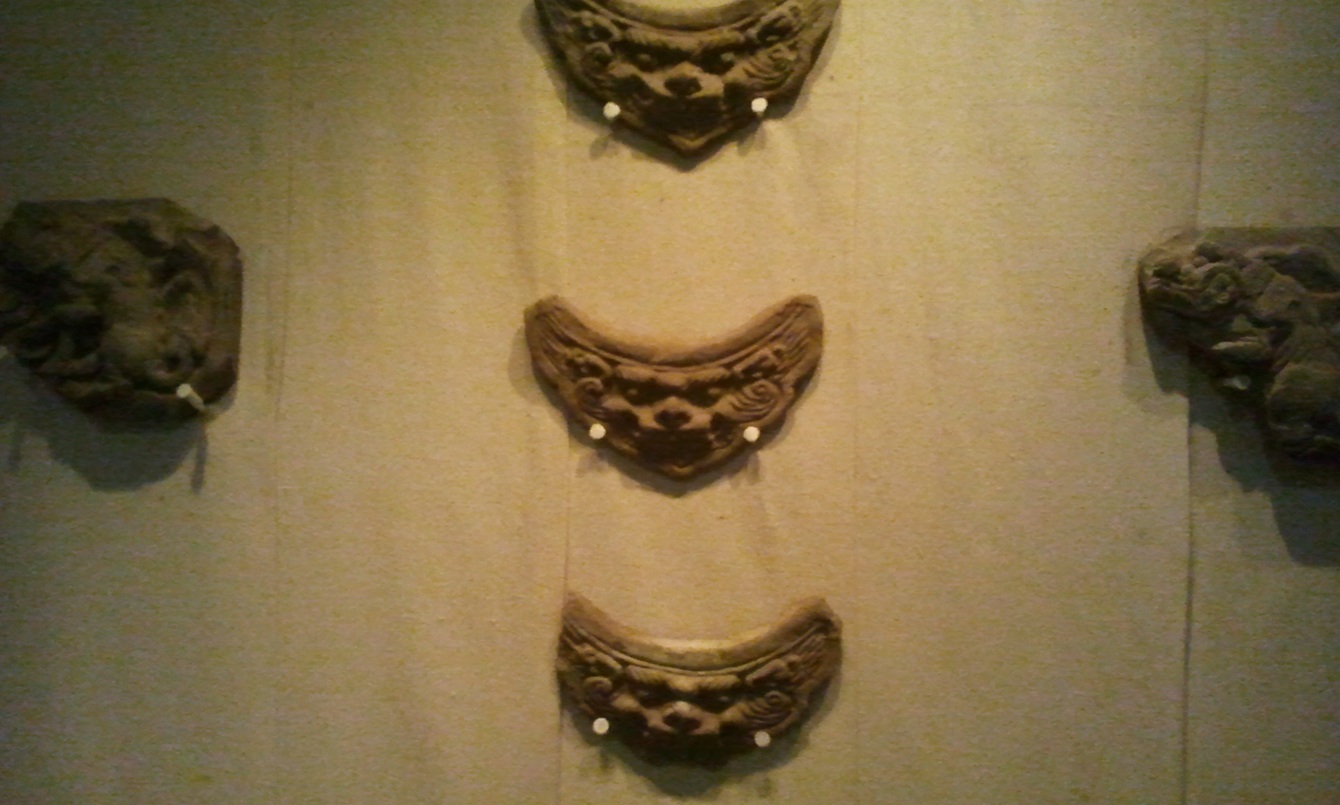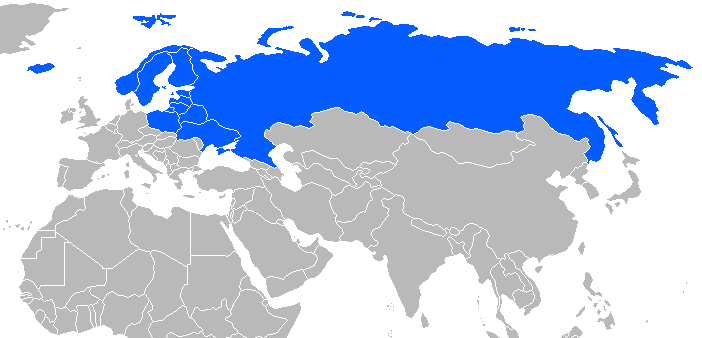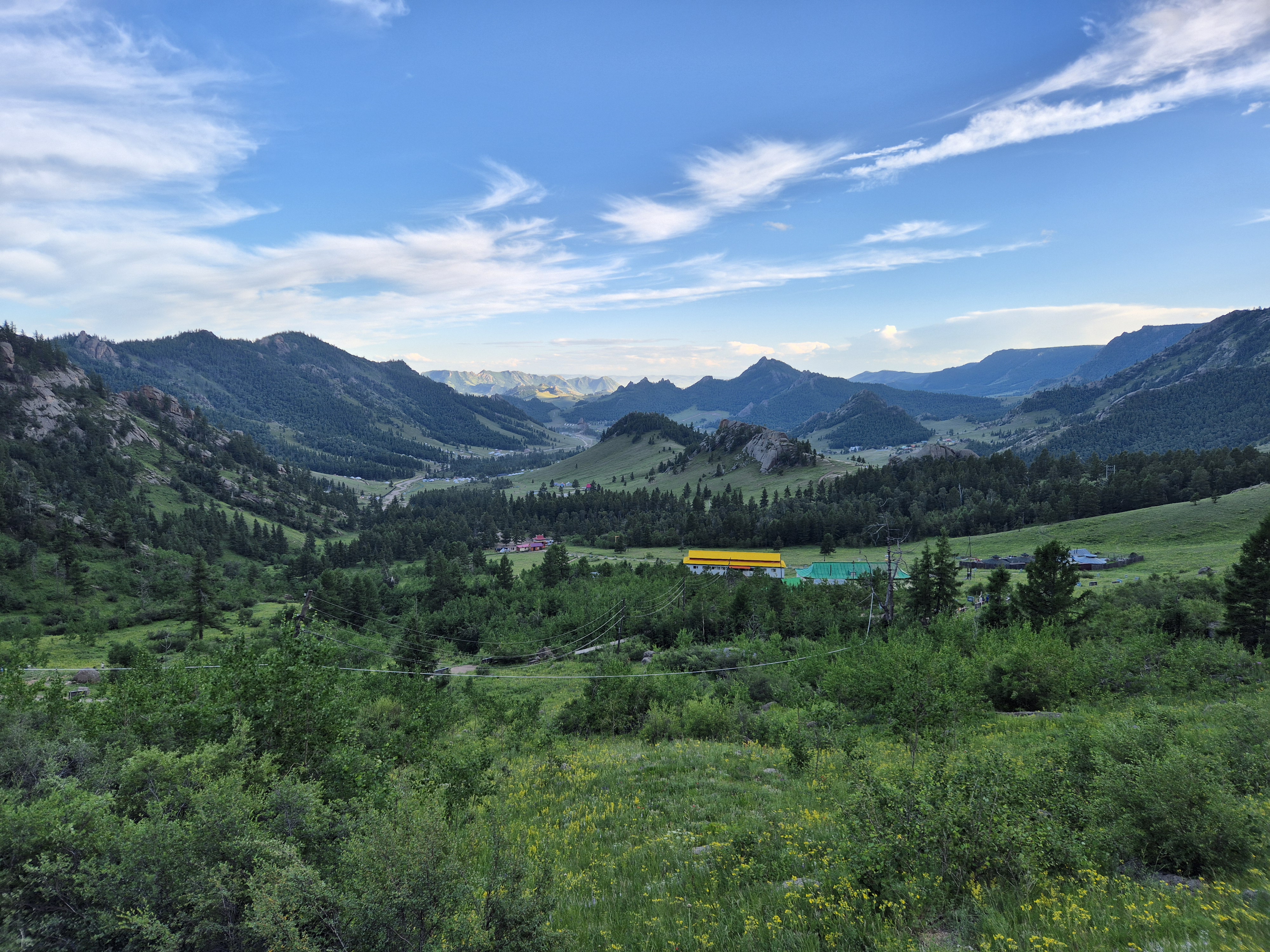|
Züünkharaa, Selenge
Züünkharaa () is a city, the center of the Mandal sum (district) in the province of Selenge, located in northern Mongolia. This makes it part of the biggest district in the entire country. As of 2022, the population is estimated at 25,105 divided amongst 7,103 households. Züünkharaa is connected to the capital city of Ulaanbaatar and the northern city of Darkhan by the Trans-Mongolian Railway. Züünkharaa contains 6 kindergartens, 1 elementary school, and 6 high schools. Since 1943, Züünkharaa has been home to the Spirit Bal Buram factory, a vodka factory with a production capacity of 15 tonnes of vodka (approximately 140 barrels) every 24 hours. History In 1994, residents of Tünkhel and Züünkharaa voted in a plebiscite to unify their two districts. This vote was brought before the 36th State Great Khural The State Great Khural is the unicameral parliament of Mongolia,Montsame News Agency. ''Mongolia''. 2006, Foreign Service office of Montsame News Agen ... [...More Info...] [...Related Items...] OR: [Wikipedia] [Google] [Baidu] |
Selenge Province
Selenge () is one of the 21 aimags (provinces) of Mongolia Mongolia is a landlocked country in East Asia, bordered by Russia to the north and China to the south and southeast. It covers an area of , with a population of 3.5 million, making it the world's List of countries and dependencies by po ..., located in the north of the country. The name is derived from the Selenge river. The capital is Sükhbaatar. The province of Darkhan-Uul, and its capital Darkhan, is located as an enclave inside Selenge. History In 1994, a portion of its area was taken out to form the Darkhan-Uul Province. Geology The province has a total forest area of 19,000 km2. Administrative subdivisions * The aimag capital Sükhbaatar. Economy In 2018, the province contributed to 2.12% of the total national GDP of Mongolia. References Provinces of Mongolia States and territories established in 1934 1934 establishments in Mongolia {{Mongolia-geo-stub ... [...More Info...] [...Related Items...] OR: [Wikipedia] [Google] [Baidu] |
Mandal, Selenge
Mandal () is a sum (district) of Selenge Province in northern Mongolia. The Züünkharaa city is Mandal sum center. The Kherkh urban-type settlement is 5 km south from Züünkharaa city center, separated with Kharaa Gol river. The Tünkhel urban-type settlement is 44 km SE from Züünkharaa city center. The population of Mandal sum is 25,600 as of 2014. Trans-Mongolian Railway crosses the sum's territory. Boroo Gold Mine is 30 km southwest from Züünkharaa city. Gatsuurt Gold Mine is 30 km southeast from Züünkharaa city. Administrative divisions The district is divided into nine bags, which are: * Bayan-Artsat * Bayankhangai * Bayansuudal * Kherkh * Minjiin Khangai * Shirkhentseg * Tarni * Tumur Zam * Tunkhel Ethnic composition Sister cities * Uiseong, South Korea * Uiryeong, South Korea South Korea, officially the Republic of Korea (ROK), is a country in East Asia. It constitutes the southern half of the Korea, Korean Peninsula and ... [...More Info...] [...Related Items...] OR: [Wikipedia] [Google] [Baidu] |
Sums Of Mongolia
A district or sum (; ) is a second-level administrative subdivision of Mongolia. The 21 provinces of Mongolia are divided into 330 sums. On average, each district administers a territory of with about 5,000 inhabitants, primarily nomadic herders. Its total revenue is 120 million Tögrög, 90% of which comes from national subsidies. Each district is again subdivided into ''bags'' (brigades; sometimes spelled ''baghs''Montsame News Agency. ''Mongolia''. 2006, Foreign Service office of Montsame News Agency, , p. 46). Most bags are of an entirely virtual nature. Their purpose is to sort the families of nomads in the district into groups, without a permanent human settlement. Officially, and occasionally on maps, many district seats (''sum'' centers) bear a name different from that of the district. However, in practice the district seat (sum center) is most often referred to under the name of the district, to the point of the official name of the district seat (sum center) being ... [...More Info...] [...Related Items...] OR: [Wikipedia] [Google] [Baidu] |
Mongolia
Mongolia is a landlocked country in East Asia, bordered by Russia to the north and China to the south and southeast. It covers an area of , with a population of 3.5 million, making it the world's List of countries and dependencies by population density, most sparsely populated sovereign state. Mongolia is the world's largest landlocked country that does not border an Endorheic basin, inland sea, and much of its area is covered by grassy steppe, with mountains to the north and west and the Gobi Desert to the south. Ulaanbaatar, the capital and List of cities in Mongolia, largest city, is home to roughly half of the country's population. The territory of modern-day Mongolia has been ruled by various nomadic empires, including the Xiongnu, the Xianbei, the Rouran, the First Turkic Khaganate, the Second Turkic Khaganate, the Uyghur Khaganate and others. In 1206, Genghis Khan founded the Mongol Empire, which became the largest List of largest empires, contiguous land empire i ... [...More Info...] [...Related Items...] OR: [Wikipedia] [Google] [Baidu] |
Ulaanbaatar
Ulaanbaatar is the Capital (political), capital and List of cities in Mongolia, most populous city of Mongolia. It has a population of 1.6 million, and it is the coldest capital city in the world by average yearly temperature. The municipality is located in north central Mongolia at an elevation of about in a valley on the Tuul River. The city was founded in 1639 as a nomadic Buddhist monasticism, Buddhist monastic centre, changing location 29 times, and was permanently settled at its modern location in 1778. During its early years, as Örgöö (anglicized as Urga), it became Mongolia under Qing rule, Mongolia's preeminent religious centre and seat of the Jebtsundamba Khutuktu, the spiritual head of the Gelug lineage of Tibetan Buddhism in Mongolia. Following the regulation of Kyakhta trade, Qing-Russian trade by the Treaty of Kyakhta (1727), Treaty of Kyakhta in 1727, a caravan route between Beijing and Kyakhta opened up, along which the city was eventually settled. With ... [...More Info...] [...Related Items...] OR: [Wikipedia] [Google] [Baidu] |
Darkhan (city)
Darkhan (; ) is the capital of Darkhan-Uul Province in northern Mongolia, and the second-largest city in the country. History On October 17, 1961, the city of Darkhan was built with extensive economic assistance from the Comecon. As its name implies, the city was originally conceived to be a manufacturing site for Mongolia's northern territory. Poland, Polish specialists built a woodworking plant, brickworks and a Lime (material), lime factory in Darkhan. Hungary, Hungarians built a meat factory, opened in 1974. In 1985, the city housed the List of tallest buildings in Mongolia, tallest building in the country when a 16-story apartment was opened. The city remains a mostly industrial centre and is the home of some 82% of Darkhan-Uul Province's population. As with most urban Mongols, some 86% of the city's population live in residential apartments, with the remaining population living in yurts (gers) on the outskirts of the city. Geography With an elevation of , Darkhan is th ... [...More Info...] [...Related Items...] OR: [Wikipedia] [Google] [Baidu] |
Trans-Mongolian Railway
The Trans-Mongolian Railway (, ) connects Ulan-Ude on the Trans-Siberian Railway in Buryatia, Russia, with Ulanqab in Inner Mongolia, China, via Ulaanbaatar, the capital of Mongolia. It was completed in 1956, and runs from northwest to southeast with major stations at Naushki/ Sükhbaatar on the Russian border, Darkhan, Züünkharaa, Choir, Sainshand, and Zamyn-Üüd/ Erenhot on the Chinese border, where the railway changes from single-track to double-track and its gauge changes from 1,520 mm Russian gauge to 1,435 mm standard gauge. The railway also has important branch lines to Erdenet and Baganuur. History Railway development came late to Mongolia. In 1937, a line was built from Ulan-Ude in the Soviet Union to Naushki on the border with Mongolia. In 1939, a paved road was extended to Ulaanbaatar, the country's capital. Construction of a rail line from Naushki to Ulaanbaatar was delayed by World War II, and completed in November 1949. The Soviet ... [...More Info...] [...Related Items...] OR: [Wikipedia] [Google] [Baidu] |
Vodka
Vodka ( ; is a clear distilled beverage, distilled alcoholic beverage. Its varieties originated in Poland and Russia. Vodka is composed mainly of water and ethanol but sometimes with traces of impurities and flavourings. Traditionally, it is made by distilling liquid from Fermentation in food processing, fermented cereal, cereal grains and potatoes since the latter was introduced in Europe in the 18th century. Some modern brands use maize, Sugarcane, sugar cane, fruits, fruit, honey, and Maple syrup, maple sap as the base. Since the 1890s, standard vodkas have been 40% alcohol by volume (ABV) (80 U.S. proof). The European Union has established a minimum alcohol content of 37.5% for vodka. Vodka in the United States must have a minimum alcohol content of 40%. Vodka is traditionally drunk "Bartending terminology, neat" (not mixed with water, ice, or other Mixer drink, mixers), and it is often served freezer chilled in the Alcohol belts of Europe#Vodka belt, vodka belt of Belaru ... [...More Info...] [...Related Items...] OR: [Wikipedia] [Google] [Baidu] |
State Great Khural
The State Great Khural is the unicameral parliament of Mongolia,Montsame News Agency. ''Mongolia''. 2006, Foreign Service office of Montsame News Agency, , p. 40 located in the Government Palace in the capital Ulaanbaatar. History 1914–1919 Tögs-Ochiryn Namnansüren became the chairman of the State Great Khural in February 1914, and served until his death in April 1919. 1924–1960 The first ''Ulsyn Ikh Khural'' was called to session in November 1924. This body was the legislature of the Mongolian People's Republic. It delegated much of its powers to an executive committee, the '' Ulsyn Baga Khural'' ( Little Khural). The Great Khural held nine sessions between November 1924 and February 1949. Following electoral reforms in 1951, the numbering of its sessions began again. The first was held in July 1951 and the third in July 1957.Alan J. K. Sanders (ed.), "Hural, Little" and "Hural, State Little", in ''Historical Dictionary of Mongolia'', 2nd ed. (Scarecrow Pre ... [...More Info...] [...Related Items...] OR: [Wikipedia] [Google] [Baidu] |
Töv Province
Töv Province (from Mongolian ''төв'' 'centre') is one of the 21 provinces of Mongolia. The national capital Ulaanbaatar is located roughly at its center, but the city itself is administered as an independent municipality. Geography The province (aimag) includes the western part of the Khentii Mountains, the mountains around the capital, as well as rolling steppe in the south and west. The most interesting body of water is the Tuul River, which crosses Ulaanbaatar and later joins the Orkhon River. Population Töv Province is populated primarily by Khalkha Mongols, followed by Kazakhs, Buryats, and Dörbet Oirats. Traffic The central traffic node is the enclave Ulaanbaatar. The city includes the largest station of the Trans-Mongolian Railway and the Buyant-Ukhaa International Airport. A small airport with an unpaved runway also exists in the aimag capital Zuunmod. Culture Manjusri Monastery is located near Zuunmod in the Bogd Khan Mountain national park. I ... [...More Info...] [...Related Items...] OR: [Wikipedia] [Google] [Baidu] |
Khentii Mountains
The Khentii Mountains () are a mountain range in the Töv and Khentii Provinces in northeastern Mongolia. History The mountains were called the Langjuxu Mountains (狼居胥山) in ancient China. In 119 BC, the Han dynasty army fought the Battle of Mobei with Xiongnu and conducted a series of rituals upon arrival at the place to glorify their victory. Geography The mountain chain overlaps the Khan Khentii Strictly Protected Area and includes Mongolia's sacred mountain, Burkhan Khaldun, which is associated with the origin of Genghis Khan. The range forms the watershed between the Arctic Ocean (via Lake Baikal) and the Pacific Ocean basins. Rivers originating in the range include the Onon, Kherlen, Menza and Tuul. A northern extension of the Khentii Mountains forms a range of the same name which is part of the Khentei-Daur Highlands in the Transbaikalia Krai of Russia. Genghis Khan, founder of the Mongol Empire, is thought to have chosen a resting place in the Khen ... [...More Info...] [...Related Items...] OR: [Wikipedia] [Google] [Baidu] |
Sükhbaatar (city)
Sükhbaatar or Sükhbaataryn may refer to: People * Damdin Sükhbaatar (1893–1923), Mongolian military leader and revolutionary hero * Sükhbaataryn Yanjmaa (1893–1962), Mongolian politician and head of state, widow of Damdin Sükhbaatar * Sükhbaataryn Batbold (born 1963), Mongolian politician and prime minister * Sükhbaataryn Sürenjav (born 1951), Mongolian Olympic wrestler * Bazaryn Sükhbaatar (born 1943), Mongolian wrestler * Tümendembereliin Sükhbaatar (born 1964), Mongolian wrestler Places in Mongolia * Sükhbaatar Province, a province of Mongolia ** Sükhbaatar, Sükhbaatar, a district * Sükhbaatar (district), a districts of the Mongolian capital of Ulaanbaatar * Sükhbaatar (city), capital of Selenge province See also * Sükhbaatar inscriptions, 8th century Turkic inscriptions in Mongolia * Sükhbaatar's Mausoleum, in Ulaanbaatar, Mongolia * Sükhbaatar Square Sükhbaatar Square (, ''Sükhbaataryn talbai'') is the central square of Ulaanbaatar, the capital of ... [...More Info...] [...Related Items...] OR: [Wikipedia] [Google] [Baidu] |




